Als het gaat om veiligheid bij het skiën, zijn korte ski's een echte doorbraak. Ze zijn lichter, makkelijker te beheersen en belasten je knieën en gewrichten minder dan lange ski's. Als je ooit moeite hebt gehad met lastige bochten, drukke pistes of herstellen van een blessure, dan zijn korte ski's - zoals de modellen van Snowfeet - misschien wel jouw perfecte match.
Dit is waarom korte ski's eruit springen:
- Betere controle: Korte ski's maken scherpere, snellere bochten mogelijk, ideaal voor krappe ruimtes of drukke pistes.
- Lager blessurerisico: Hun compacte ontwerp vermindert de draaikrachten op je knieën, waardoor de kans op ACL-blessures afneemt.
- Gemakkelijker te hanteren: Lichtgewicht en draagbaar, ze zijn minder vermoeiend en eenvoudiger voor beginners of recreatieve skiërs om te gebruiken.
- Veiliger vallen: Kortere ski's raken minder snel verstrikt bij vallen, wat het risico op ernstige verwondingen vermindert.
Daarentegen zijn lange ski's beter geschikt voor stabiliteit bij hoge snelheid en diepe poedersneeuw, maar vereisen ze meer vaardigheid en energie. Ze verhogen ook de belasting van de gewrichten en zijn moeilijker te manoeuvreren in krappe ruimtes, waardoor ze minder vergevingsgezind zijn voor beginners of mensen die herstellen van blessures.
Snelle vergelijking:
| Factor | Korte ski's (Snowfeet) | Lange ski's |
|---|---|---|
| Lengte | 43–120 cm | 66–71 inch |
| Controle | Gemakkelijkere, precieze bochten | Langzamere, bredere bochten |
| Blessurerisico | Lager | Hoger (meer hefboomwerking) |
| Gewicht | Lichtgewicht | Zwaarder |
| Beste voor | Beginners, recreatieve skiërs, smal terrein | Gevorderde skiërs, hoge snelheden |
Korte ski's zijn vooral geweldig als je nieuw bent met skiën, drukke gebieden navigeert of gewoon een veiligere, comfortabelere rit wilt. Klaar om de piste op te gaan? Laten we in de details duiken!
Korte ski's versus lange ski's
Hoe de lengte van ski's het blessurerisico beïnvloedt
De lengte van je ski's speelt een grote rol in hoeveel kracht er op je gewrichten wordt overgedragen. Zie ski's als hefbomen voor je benen - langere ski's betekenen dat er meer kracht wordt doorgegeven aan je knieën en andere gewrichten.
Knieblessures zijn het meest voorkomende type ongeluk bij alpineskiën, goed voor 27% tot 41% van alle blessures. Hoewel de vooruitgang in skibindingen het aantal breuken aan onderbeen en enkel met bijna 90% heeft verminderd, nemen ACL-scheuren nog steeds toe. Waarom? Omdat bindingen weliswaar uitstekend zijn in het voorkomen van breuken, ze je knieën niet beschermen tegen ligamentblessures zoals verstuikingen en scheuren.
Traditionele alpine ski's, die meestal 59–71 inch lang zijn, kunnen de draaikrachten vergroten wanneer je een kant raakt. Dit kan leiden tot knieverstuikingen en andere ligamentblessures, vooral bij bewegingen zoals valgus-externe rotatie (een chique manier om te zeggen dat je knie op een verkeerde manier draait). Hoewel hoogwaardige bindingen het risico op breuken met tot wel 80% kunnen verminderen, bouwt de stress op je gewrichten zich op bij elke bocht en aanpassing. Hier komen kortere ski's, zoals Snowfeet*, in beeld - ze zijn ontworpen om deze risico's te verkleinen.
Veelvoorkomende ski-blessures
ACL-scheuren zijn een perfect voorbeeld van hoe lange ski's je lichaam kunnen belasten. Deze blessures gebeuren vaak wanneer je ski's onverwacht draaien, waardoor er druk op je knieën komt te staan. Hoewel bindingen uitstekend zijn in het voorkomen van botbreuken, kunnen ze de rotatiekrachten die je knieën, enkels en heupen gedurende een dag op de piste belasten, niet tegenhouden.
Short Skis (Snowfeet*) vs. Lange Ski's: Ontwerp Impact
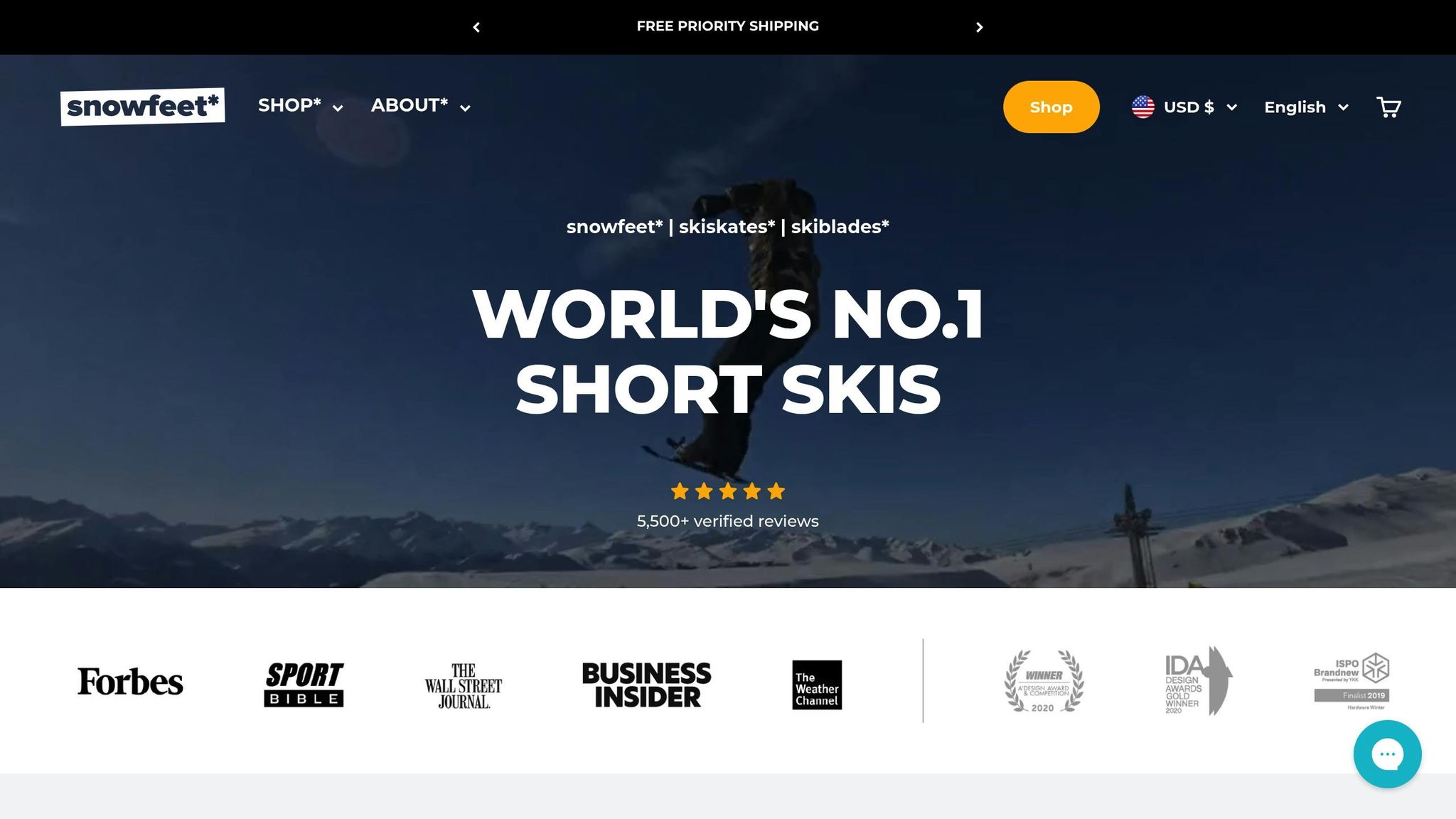
Het ontwerp van je ski's kan een enorm verschil maken bij het voorkomen van blessures.
Snowfeet* producten zijn bijvoorbeeld gebouwd met een compact ontwerp dat het spel verandert. Deze korte ski's variëren van 15 tot 47 inch (38–120 cm), wat betekent dat ze veel minder hefboomwerking op je gewrichten creëren. Een 15-inch Mini Ski Skate produceert bijvoorbeeld veel minder draaikracht dan een traditionele 67-inch ski.
"Langere carving ski's kunnen fungeren als een langere hefboomarm om het been te buigen of te draaien, wat kan leiden tot een blessure aan de ACL." - Ruedl et al.
Een andere slimme eigenschap van Snowfeet* is hun lagere bindinghoogte, die helpt om laterale krachten op je knieën te verminderen. Bovendien geeft hun ontwerp je betere snelheidscontrole en wendbaarheid. In tegenstelling tot langere ski's, die kunnen leiden tot overmatige snelheid en minder controle, maken Snowfeet* snellere aanpassingen en natuurlijkere beenbewegingen mogelijk. Aan de andere kant creëren traditionele skimerken zoals K2, Atomic en Head vaak meer hefboomwerking en gewrichtsspanning, wat de kans op blessures vergroot.
Controle en Wendbaarheid voor Blessurepreventie
Als het gaat om veilig blijven op de pistes, is controle alles. In staat zijn om snel je snelheid, richting of reactie aan te passen kan het verschil maken bij het voorkomen van blessures. En een belangrijke factor die hierbij meespeelt? Ski lengte.
Denk er zo over na: kortere ski's zijn als snelle fietsen die gemakkelijk door smalle stadsstraten kunnen navigeren, terwijl langere ski's meer zijn als grote vrachtwagens die extra ruimte nodig hebben om te draaien. Laten we eens bekijken hoe de lengte van ski's invloed heeft op controle en wendbaarheid.
Short Skis: Snelle Bochten en Gemakkelijk Beheer
Snowfeet* producten gaan helemaal over het geven van controle. Met compacte ontwerpen variërend van de 38 cm (ongeveer 15-inch) Mini Ski Skates tot de 120 cm (ongeveer 47-inch) Short Skis, maken deze setups scherpe, precieze bochten een fluitje van een cent. Vergelijk dit met traditionele lange ski's van merken zoals Rossignol, Salomon en Völkl, die meestal tussen de 59 en 71 inch meten. De kortere lengte van Snowfeet* ski's betekent minder hefboomwerking en momentum, waardoor ze veel gemakkelijker te hanteren zijn.
"Ces skiblades sont tellement amusants et faciles à contrôler. Je ne reviendrai jamais aux skis classiques." - Andrew B.
Het lichte ontwerp van Snowfeet* ski's draagt ook bij aan hun reactievermogen. Of je nu een ijzige plek ontwijkt of een andere skiër ontwijkt, die fractie van een seconde reactietijd kan het verschil maken. Bovendien zorgt hun uitstekende remkracht voor gecontroleerde en precieze vertraging, wat niet altijd het geval is bij zwaardere, langere ski's. En als je toch valt? Korte ski's verminderen de impactkrachten, waardoor valpartijen minder ernstig zijn.
Lange Ski's: Stabiliteit Komt met Compromissen
Lange ski's hebben zeker hun sterke punten. Ze blinken uit in stabiliteit bij hoge snelheden en presteren goed in diepe poedersneeuw. Merken zoals Rossignol, Salomon, Völkl, K2, Atomic en Head ontwerpen deze ski's voor agressieve skiërs die houden van racen of carven op brede, open geprepareerde pistes bij snelheden van 40+ mph. Ze bieden een stabiel platform voor die scenario's.
Maar hier zit het addertje onder het gras: die stabiliteit heeft een prijs. Lange ski's hebben meer ruimte en tijd nodig om bochten te maken vanwege hun grotere draaicirkel. Als je plotseling een kind of een onverwacht obstakel moet ontwijken, kan die vertraagde reactie riskant zijn. Het extra gewicht en volume maken het ook veel moeilijker om door krappe gebieden te navigeren - zoals boomrijke afdalingen, buckels of drukke beginnershellingen. Studies tonen zelfs aan dat de moeilijkheid om snel te stoppen of lange ski's te manoeuvreren de kans op blessures vergroot.
Om deze redenen raden veel skileraars en veiligheidsexperts beginners, park-skiërs en iedereen die controle en veiligheid belangrijk vindt aan om voor kortere ski's te kiezen. In de meeste recreatieve skisituaties bieden kortere ski's de beste balans tussen gebruiksgemak en het voorkomen van blessures.
Letselrisicoscenario's: Korte vs. Lange Ski's
Als het gaat om veiligheid bij het skiën, kan de lengte van je ski's een groot verschil maken. Laten we eens kijken naar enkele praktijkvoorbeelden waar de lengte van de ski een belangrijke rol speelt bij het risico op blessures.
Valpartijen bij Hoge Snelheid
Met hoge snelheid van de hellingen af racen is spannend, maar bij hoge snelheid vallen kan gevaarlijk zijn - en de lengte van je ski kan daarbij helpen of juist tegenwerken. Lange ski's, meestal 66–71 inch, kunnen draaikrachten tijdens een val versterken.
"Echter, in het geval van verlies van controle of een skifout, kunnen langere carving ski's fungeren als een langere hefboomarm die het been kan buigen of draaien, wat leidt tot een blessure aan de ACL." - Gerhard Ruedl et al.
Kortere ski's, zoals Snowfeet* producten van 17 tot 47 inch, verminderen dit hefboomeffect. Bijvoorbeeld, Skiblades van 26 inch of Korte Ski's van 47 inch hebben minder oppervlak dat kan blijven haken of draaien. Dit ontwerp kan het risico op ernstige ACL-blessures verlagen, vooral bij hoge snelheid crashes, waar gewrichtsbelasting al een zorg is.
Knielast en Gewrichtsbelasting
Korte ski's vereisen wel de juiste techniek, maar ze bieden echte voordelen als het gaat om het verminderen van gewrichtsbelasting. Dr. David Rothberg, orthopedisch chirurg aan de University of Utah Health Care, wijst erop:
"Omdat de ski korter is en we sneller kunnen draaien, zetten we eigenlijk meer kracht op onze knie." - Dr. David Rothberg
Dat gezegd hebbende, helpt het lichte en responsieve ontwerp van Snowfeet* deze krachten te compenseren. In tegenstelling tot lange ski's, die vaak bredere, agressievere bochten aanmoedigen die langdurige druk op je knieën kunnen zetten, maken Snowfeet* producten het manoeuvreren makkelijker. Hun verminderde fysieke belasting helpt skiërs om langer een goede houding te behouden, wat het risico op blessures door vermoeidheid aanzienlijk kan verminderen.
Drukke of Smalle Terreinen
Korte ski's komen echt tot hun recht in drukke of smalle gebieden waar snelle reacties cruciaal zijn. Hun compacte ontwerp maakt het makkelijker om door obstakels te zigzaggen en botsingen te vermijden. Deze behendigheid is vooral handig in buckelvelden, waar kortere uitrusting vaak de voorkeur heeft:
"Kortere ski's zijn zeker makkelijker op buckels dan langere." - AppStateDuckPond
"Ik heb gemerkt dat de kortere ski de voorkeur heeft op buckelpistes vanwege het lichte gewicht, de behendigheid en ik kan ze op een dubbeltje draaien." - Eldorren
Veel Snowfeet* modellen zijn zelfs uitgerust met ingebouwde hielremmen, waardoor je snel kunt stoppen bij het navigeren door krappe plekken. Of je nu door bomen skiet of smalle paden aanpakt, de wendbaarheid van korte ski's geeft je een voordeel dat traditionele lange ski's gewoon niet kunnen evenaren.
sbb-itb-17ade95
Vergelijkingstabel: Korte Ski's (Snowfeet*) vs. Lange Ski's
Wanneer je korte ski's - zoals die van Snowfeet* - vergelijkt met traditionele lange ski's, vallen de verschillen in veiligheid, bruikbaarheid en algehele ervaring op. Hier is een zij-aan-zij overzicht van belangrijke factoren die deze verschillen benadrukken.
Markdown Tabel
| Factor | Korte ski's (Snowfeet*) | Lange Ski's (Traditioneel) |
|---|---|---|
| Lengtebereik | 17–47 inch (inclusief Mini Ski Skates tot Short Skis) | Typisch 66–71 inch |
| Gewicht | Lichtgewicht en gemakkelijk te dragen | Zwaarder; vaak dakdragers nodig voor transport |
| Wendbaarheid | Snelle bochten, ideaal voor krappe ruimtes | Langzamere bochten; grotere draaicirkel |
| Snelheidscontrole | Makkelijker om te vertragen of te stoppen | Moeilijker te beheersen bij hoge snelheden |
| Druk terrein | Perfect om obstakels in drukke gebieden te navigeren | Lomp en minder praktisch in krappe ruimtes |
| Leercurve | Snel op te pakken, geschikt voor beginners | Steilere leercurve, vereist meer uitrusting |
| Vermoeidheidsfactor | Minder vermoeiend, helpt energie en vorm te behouden | Zwaarder, wat leidt tot snellere vermoeidheid |
| Herstel na val | Korte lengte vermindert het risico op verstrikking | Langere ski's kunnen draaien of blijven haken bij vallen |
| Buckelprestaties | Soepel en wendbaar op oneffen terrein | Minder responsief op hobbels en buckels |
| Prijsklasse | $250–$775 (Snowfeet* modellen) | $400–$1.500+ (inclusief schoenen, bindingen, enz.) |
| Draagbaarheid | Past in een rugzak, gemakkelijk te vervoeren | Vereist skidragers en meer opbergruimte |
| Ideale gebruikers | Beginners, ouderen, recreatieve skiërs en mensen die herstellen van blessures | Gevorderde racers en snelheidsliefhebbers |
| Veelzijdigheid van terrein | Werkt op pistes, parken, wandelpaden en zelfs achtertuinen | Voornamelijk ontworpen voor geprepareerde skipistes |
| Compatibiliteit met schoenen | Compatibel met winterschoenen, snowboardlaarzen of skischoenen | Vereist gespecialiseerde skischoenen |
Korte ski's bieden duidelijke voordelen op het gebied van veiligheid en gebruiksgemak. Hun compacte formaat (17–47 inch) vergeleken met traditionele ski's (66–71 inch) vermindert het hefboomeffect bij vallen, waardoor ze een veiligere optie zijn. Deze kortere lengte maakt ook snellere bochten en betere controle mogelijk, vooral in krappe of drukke gebieden.
Een ander opvallend kenmerk van Snowfeet* producten is hun veelzijdigheid. In tegenstelling tot traditionele lange ski's die zijn afgestemd op specifieke terreinen en dure, gespecialiseerde uitrusting vereisen, passen Snowfeet* korte ski's zich aan verschillende omgevingen aan. Of je nu op de piste, op paden of zelfs in je eigen achtertuin bent, ze presteren goed. Bovendien zijn ze compatibel met diverse schoeisel, van winterschoenen tot snowboardlaarzen, wat je meer flexibiliteit geeft.
Prijs is een ander gebied waar Snowfeet* uitblinkt. Met modellen variërend van $250 tot $775 zijn ze een budgetvriendelijk alternatief voor traditionele setups, die gemakkelijk meer dan $1.500 kunnen kosten als je laarzen, bindingen en andere accessoires meerekent.
Deze vergelijking maakt duidelijk waarom korte ski's een geweldige optie zijn, vooral voor beginners, recreatieve skiërs en mensen die herstellen van blessures. Vervolgens duiken we dieper in hoe deze eigenschappen specifiek helpen bij herstel na een blessure.
Herstel en preventie na een blessure
Herstellen van een ski-blessure kan voelen als een zware klim, maar de juiste uitrusting kan het verschil maken. Of je nu kiest voor korte ski's of traditionele lange ski's, je keuze kan direct invloed hebben op hoe veilig en vol vertrouwen je weer de piste op gaat.
Waarom korte ski's kunnen helpen bij herstel
Korte ski's brengen meer dan alleen plezier - ze kunnen je herstel daadwerkelijk ondersteunen. Producten zoals Snowfeet* zijn ontworpen om balansproblemen te verminderen en het vastlopen van de kanten te voorkomen, waardoor ze een vergevingsgezinde optie zijn voor skiërs die hun vertrouwen na een blessure terugwinnen.
Een groot voordeel? Korte ski's vragen minder energie om te draaien en te stoppen. Wanneer je spieren zwak zijn en je uithoudingsvermogen niet meer is wat het was, is energiebesparing essentieel. Dit stelt je in staat om de juiste houding te behouden en de controle te houden tijdens je afdalingen.
En omdat ze minder energie vragen om te draaien of te stoppen, kunnen ze een veiligere optie zijn voor beginners of gevorderde skiërs die de kunst van het skiën nog onder de knie moeten krijgen.
Hun lichte, compacte ontwerp maakt snelle richtingsveranderingen een fluitje van een cent. Deze wendbaarheid helpt je obstakels te vermijden zonder onnodige belasting van je benen of core. Het betekent ook dat je je kunt concentreren op het verfijnen van je techniek in plaats van te worstelen met zwaar materiaal.
En laten we het vertrouwen niet vergeten. Je in controle voelen tijdens het gebruik van korte ski's kan een wereld van verschil maken als je het vertrouwen in je kunnen na een blessure weer opbouwt.
En omdat ze gemakkelijker te beheersen zijn, kunnen ze je helpen je zelfverzekerder te voelen bij het uitproberen van nieuwe dingen, wat hun populariteit verklaart bij zowel beginners als ervaren skiërs.
Waarom Lange Skiën Een Uitdaging Kunnen Zijn Tijdens Het Herstel
Hoewel lange skiën van merken als Rossignol, Atomic en Head voor veel skërs onmisbaar zijn, kunnen ze voor mensen die herstellen van een blessure een uitdaging vormen. Hun extra gewicht en lengte vragen meer energie, wat snel tot vermoeidheid kan leiden. En zoals we allemaal weten, is vermoeidheid een recept voor slechte techniek en een verhoogd valrisico.
Lange skiën hebben ook vaak tragere reactietijden. Hun grotere draaicirkel maakt het moeilijker om snel te reageren op obstakels of plotselinge veranderingen op de piste. Deze vertraging kan leiden tot onhandige bewegingen of zelfs botsingen, wat het laatste is wat je wilt tijdens het genezen.
De enorme omvang en complexiteit van lange skiën kunnen ook overweldigend aanvoelen. Van de zwaardere schoenen tot de ingewikkelde bindingen en de noodzaak voor precieze afstellingen, het hele pakket kan veel zijn om te hanteren als je lichaam nog in herstel is.
Short skis, zoals die van Snowfeet*, pakken deze uitdagingen direct aan. Door vermoeidheid te verminderen, bewegingen te vereenvoudigen en snellere reactietijden te bieden, zorgen ze voor een veiligere en beter beheersbare manier om terug te keren naar de pistes. Bovendien helpen ze de risico's te minimaliseren die traditionele lange skiën tijdens je herstel kunnen veroorzaken.
Conclusie: Waarom Snowfeet* Short Skis Veiliger Zijn
Short skis, zoals Snowfeet*, bieden duidelijke veiligheidsvoordelen ten opzichte van traditionele lange skiën. Een opvallende eigenschap is hun uitzonderlijke controle en wendbaarheid. Dit betekent minder ongelukken omdat skërs snel kunnen reageren op obstakels, andere rijders of onverwachte veranderingen in de sneeuwcondities. Op drukke pistes of smalle paden kan die snelle reactie het verschil maken. Bovendien betekent betere controle minder belasting van je lichaam in het algemeen.
Hun lichtgewicht, compacte ontwerp helpt ook de gewrichtsdraaimomenten te verminderen, wat het risico op veelvoorkomende skiënblessures verlaagt. Eigenlijk werken ze mee met de natuurlijke bewegingen van je lichaam, waardoor ze een veiligere optie zijn voor je gewrichten en spieren.
Nog een voordeel? Snowfeet* short skis maken skiën toegankelijker voor iedereen. Of je nu een absolute beginner bent of een doorgewinterde pro, deze skiën zijn ontworpen voor alle vaardigheidsniveaus. Voor steilere hellingen kan het combineren van Snowfeet* met snowboardboots extra stabiliteit en controle geven, waardoor je nog meer vertrouwen op de berg hebt.
Door veel van de risicovolle situaties die bij traditioneel skiën horen te verminderen, geven Snowfeet* short skis je de vrijheid om van de pistes te genieten zonder extra zorgen. Of je nu een druk beginnersgebied doorkruist of na een blessure weer voorzichtig begint met skiën, ze bieden de controle en het vertrouwen die je nodig hebt om plezier te hebben en veilig te blijven.
Met hun combinatie van controle, verminderde gewrichtsbelasting en eenvoudige bediening bieden Snowfeet* short skis een veiligere, leukere wintersportervaring - en dat alles zonder in te leveren op de spanning die skiën zo opwindend maakt.
Veelgestelde vragen
Waarom zijn korte ski's zoals Snowfeet* veiliger voor je knieën in vergelijking met traditionele lange ski's?
Korte ski's, zoals Snowfeet*, zijn een uitstekende optie als je de belasting op je knieën wilt verminderen. Hun compacte ontwerp betekent minder hefboomwerking en draaikracht tijdens bochten, wat de kans op blessures zoals ACL-scheuren of andere ligamentproblemen kan verkleinen. Dit maakt ze vooral nuttig voor beginners, oudere skiërs of iedereen die eerder knieproblemen heeft gehad.
Bovendien zijn Snowfeet* korte ski's licht en super makkelijk te controleren. Dit maakt het eenvoudiger om in balans en stabiel te blijven tijdens het skiën, wat een grote winst is voor zowel vertrouwen als veiligheid. De extra controle helpt ook ongelukken te verminderen die kunnen gebeuren als je de controle verliest - iets wat vaker voorkomt bij langere ski's. Als veiligheid en gemak bovenaan je lijst staan, zijn korte ski's zeker het overwegen waard.
Waarom zijn Snowfeet* korte ski's een goede keuze voor beginners en mensen die herstellen van blessures?
Snowfeet* korte ski's zijn een uitstekende keuze voor beginners en mensen die herstellen van blessures. Hun compacte formaat, variërend van 15 tot 47 inch, belast je knieën en gewrichten minder. De kortere lengte betekent minder hefboomwerking en minder rotatiekrachten, waardoor ze makkelijker en veiliger te beheersen zijn dan traditionele lange ski's.
Dankzij hun lichte en super wendbare ontwerp helpen deze korte ski's bij het behouden van balans en bieden ze soepelere controle. Dit maakt ze een vergevingsgezinde optie voor iedereen die leert skiën of het vertrouwen op de piste terugwint. Het draait allemaal om veiliger en leuker skiën terwijl je het onder de knie krijgt.
Zijn Snowfeet* korte ski's geschikt voor verschillende terreinen, en hoe verhouden ze zich tot traditionele lange ski's?
Snowfeet* korte ski's zijn veelzijdig en krachtig. Of je nu ijzige hellingen aanpakt, door hobbelige paden weeft of krappe plekken navigeert, deze compacte ski's kunnen het allemaal aan. Hun ontwerp maakt scherpe bochten en snelle richtingsveranderingen moeiteloos, waardoor je precieze controle hebt, zelfs onder lastige omstandigheden.
Als je ze vergelijkt met traditionele lange ski's, schitteren Snowfeet* korte ski's in wendbaarheid en responsiviteit. Ze zijn een droom voor freestyle skiën en all-mountain verkenning. Natuurlijk geven lange ski's je misschien meer stabiliteit bij hoge snelheden, maar ze kunnen ook log en minder behendig aanvoelen. Snowfeet* korte ski's richten zich op het leveren van een leuke, vrije rit die draait om controle en speelsheid - en leggen daarmee het oude idee naast zich neer dat langere ski's altijd de beste keuze zijn.







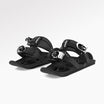






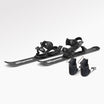






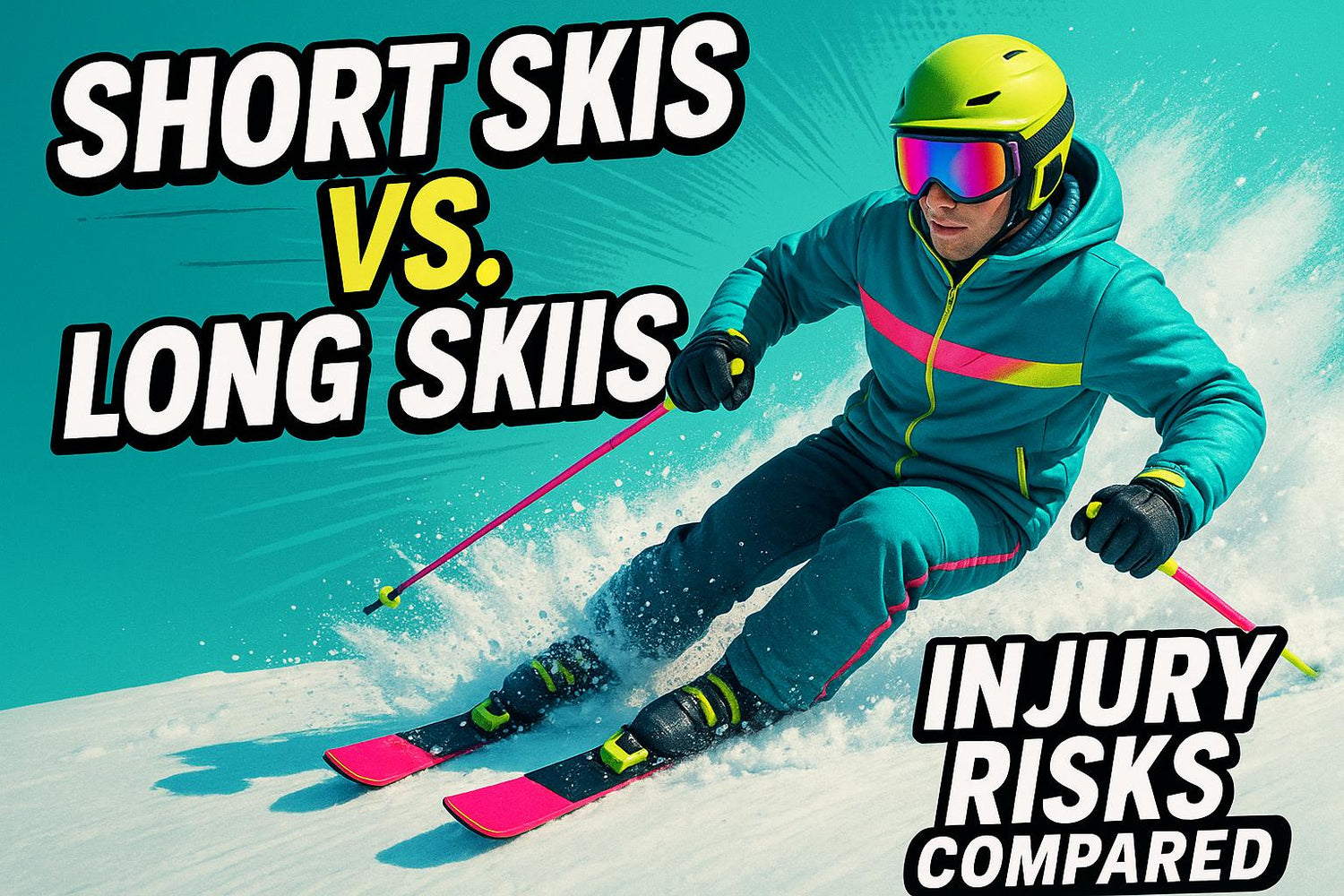
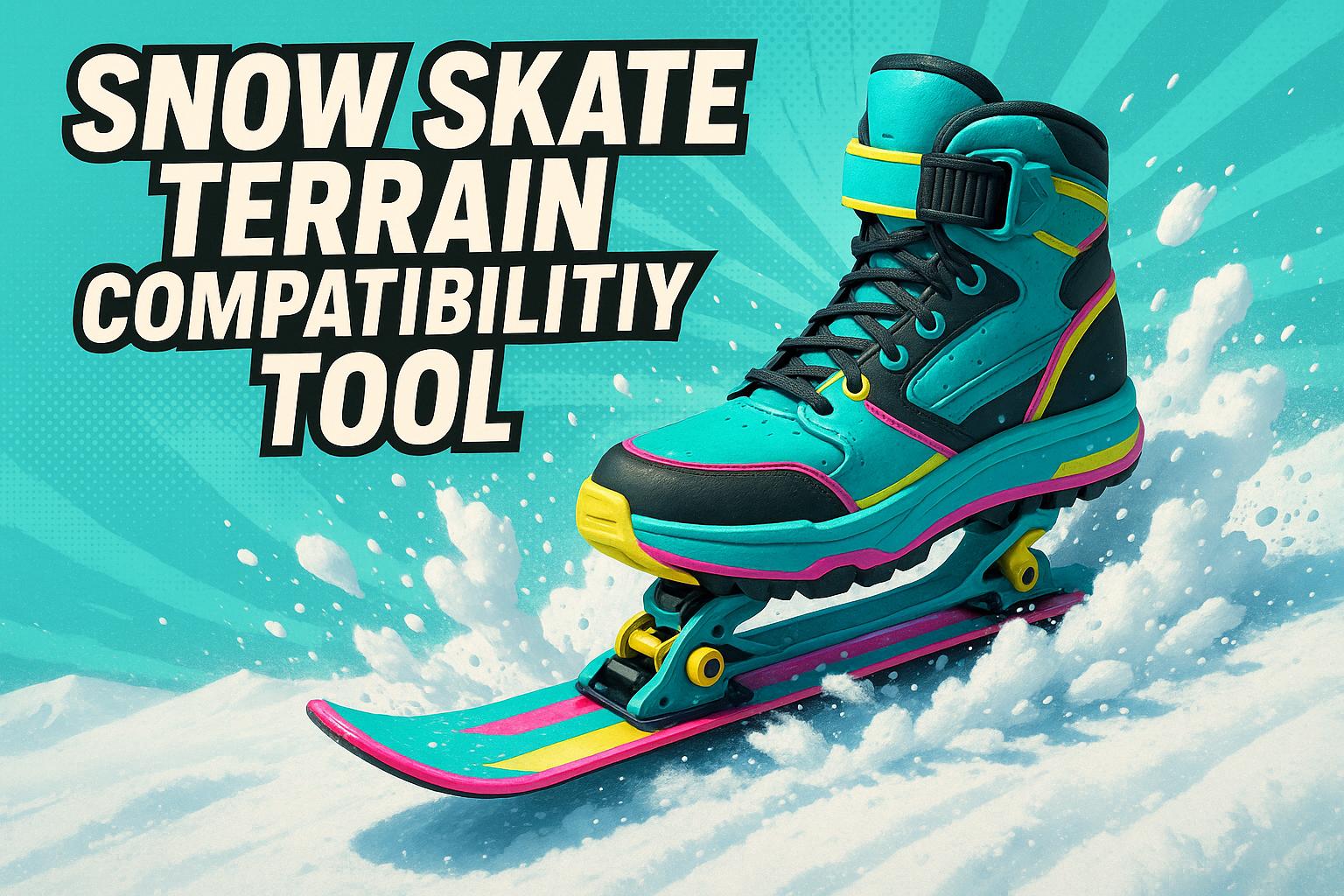
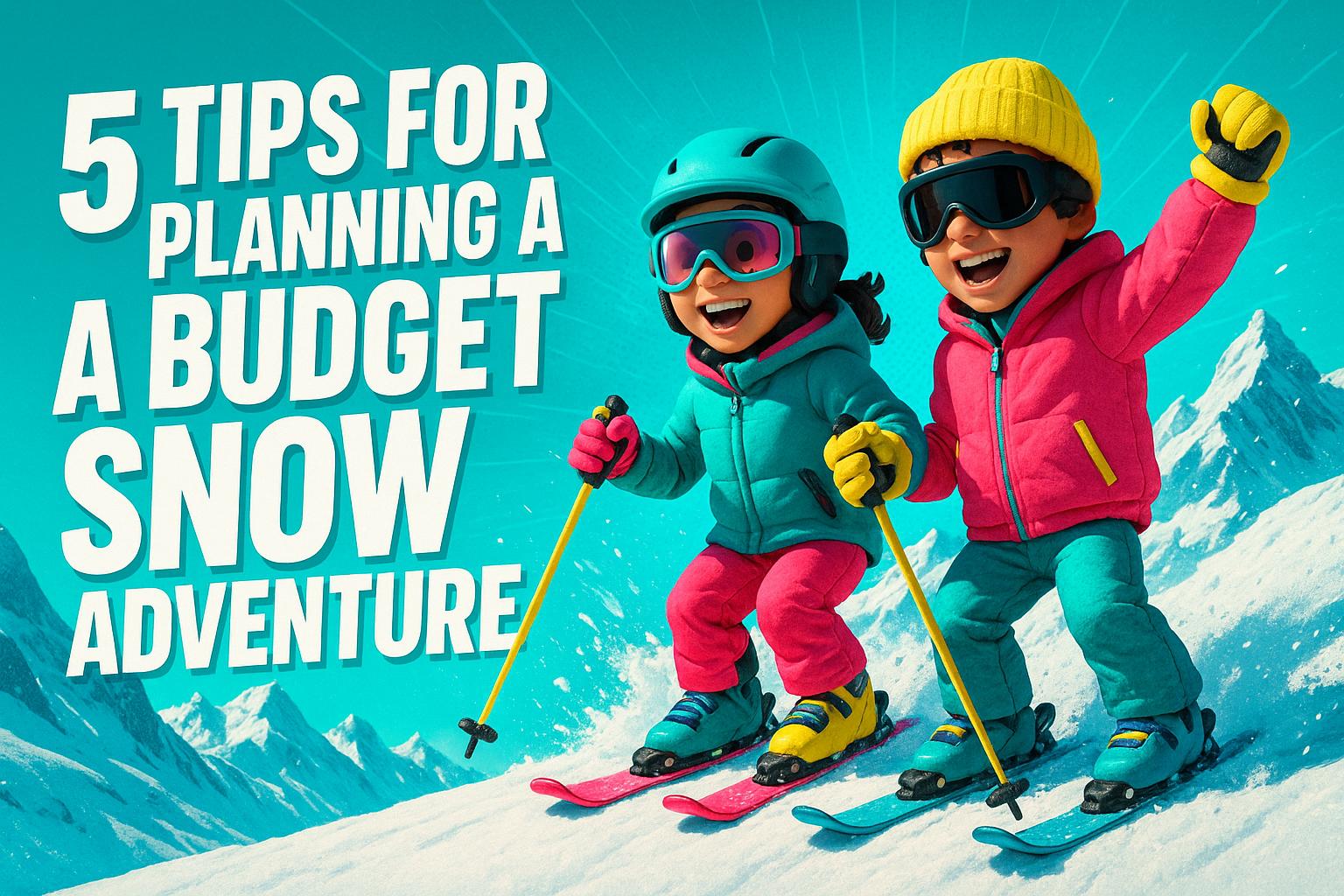

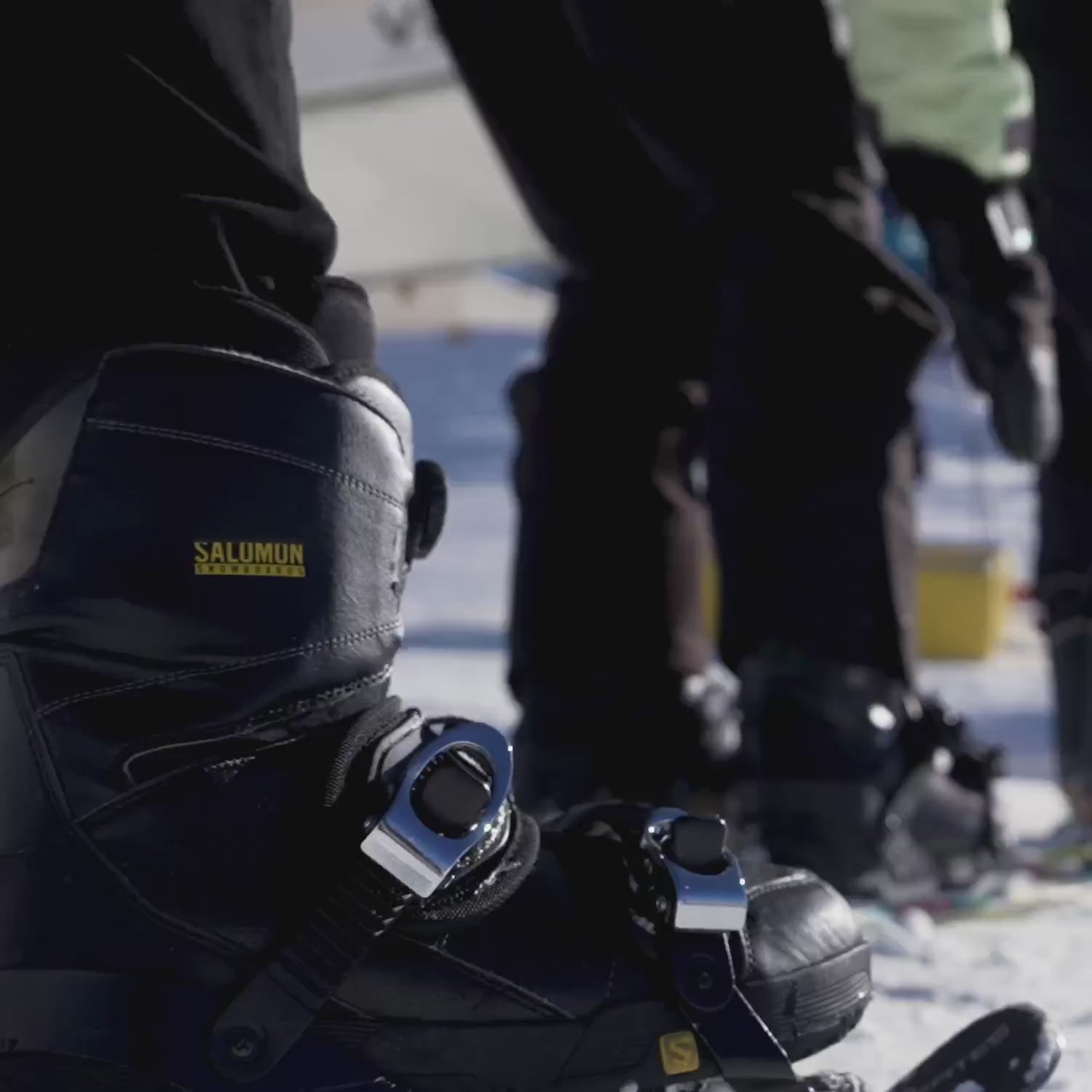


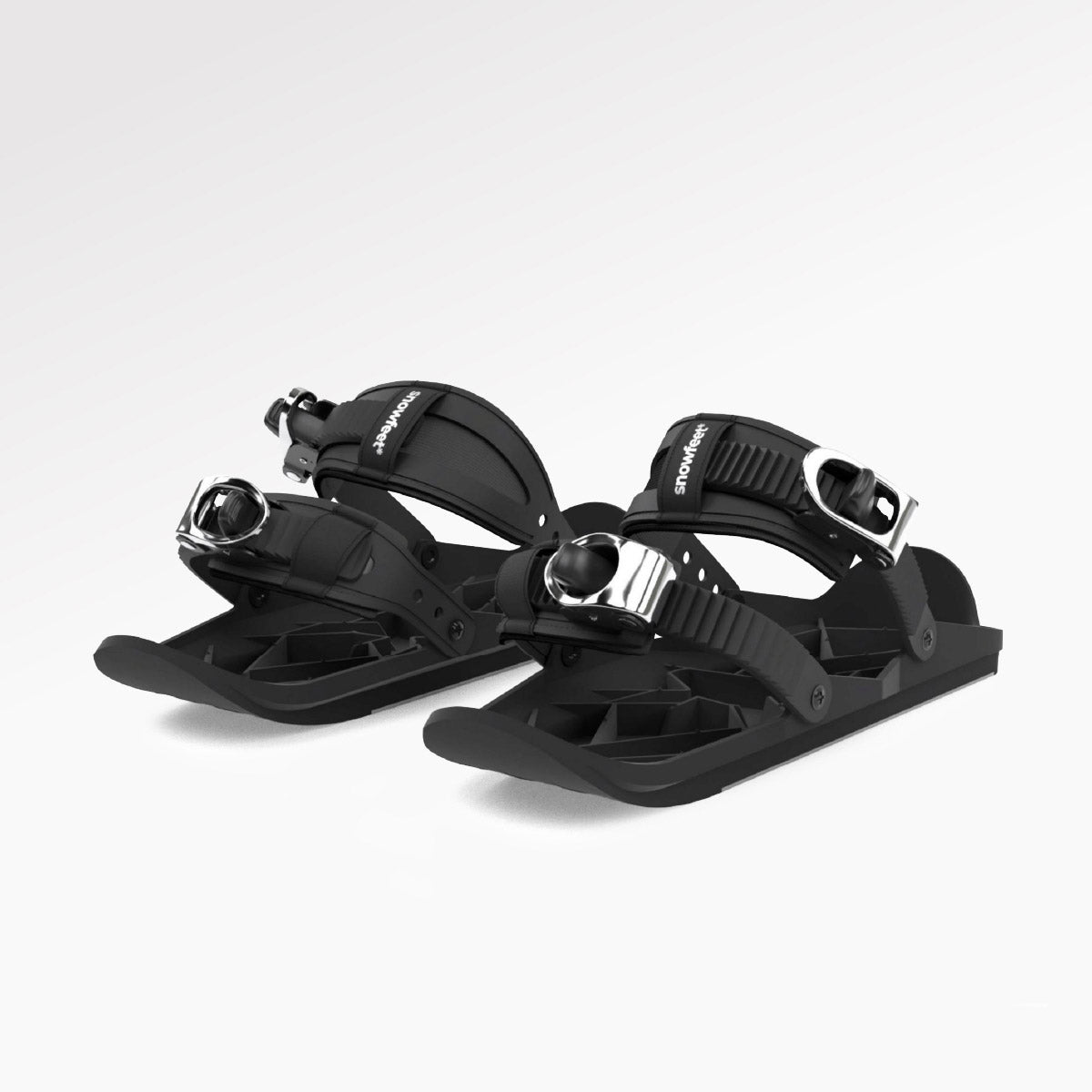
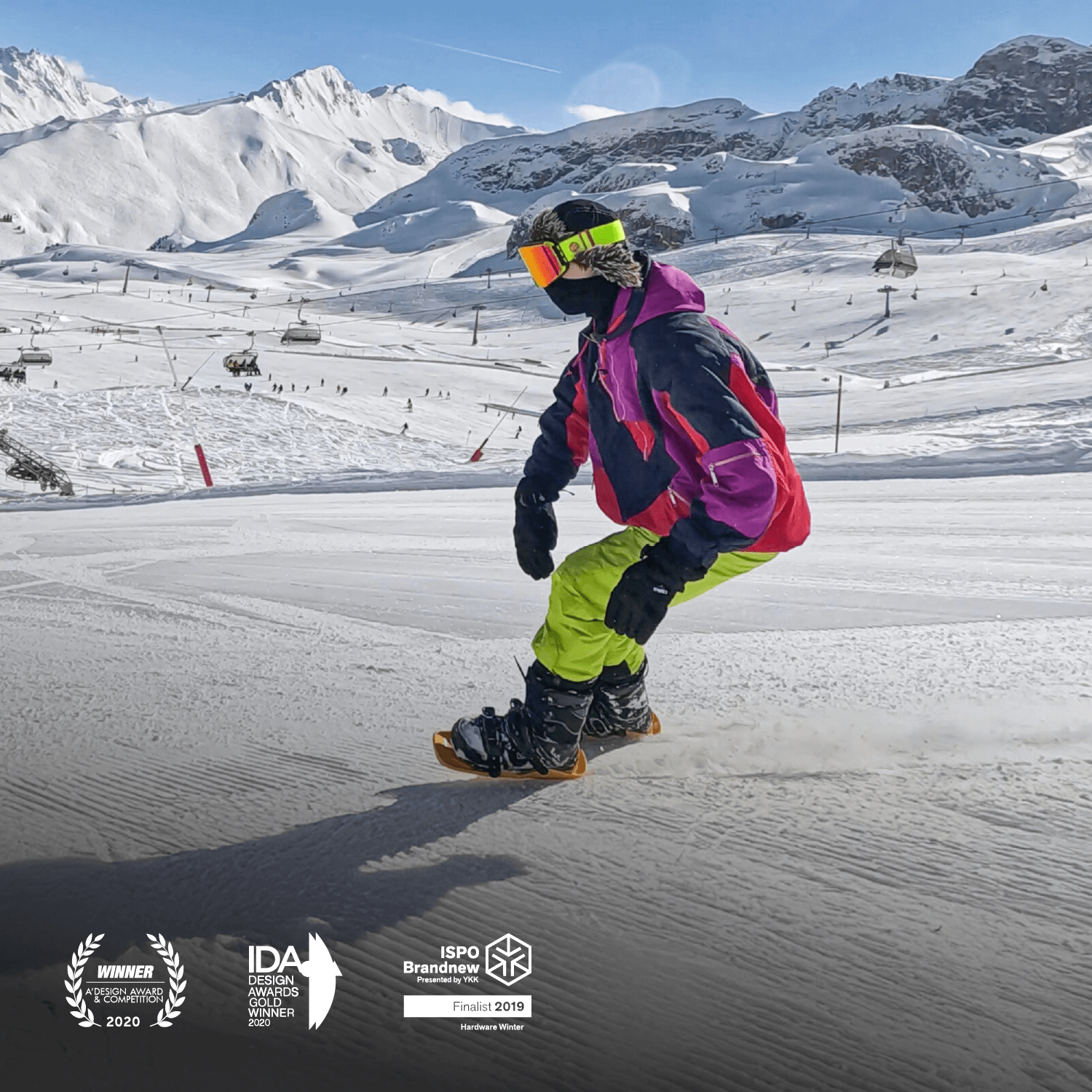

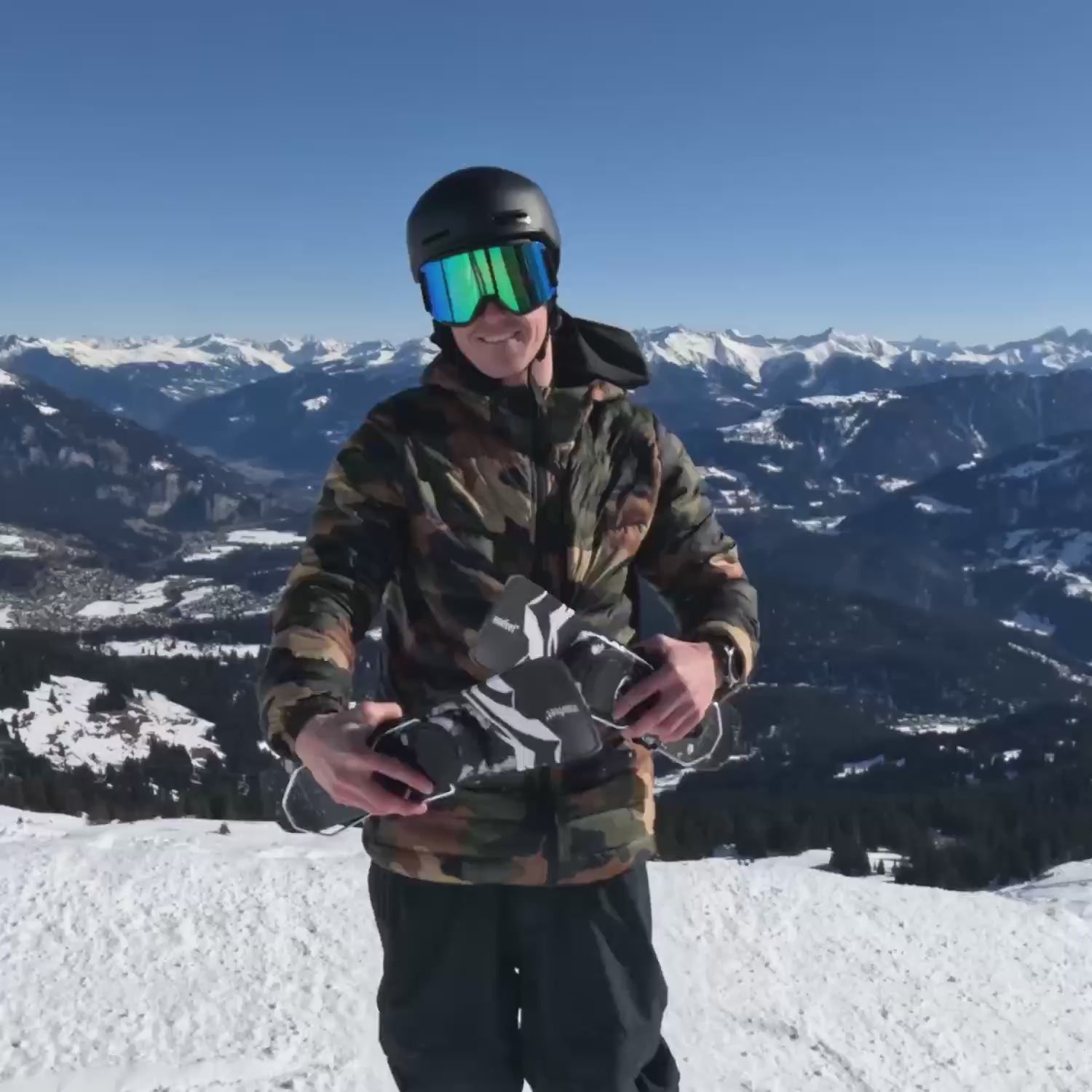

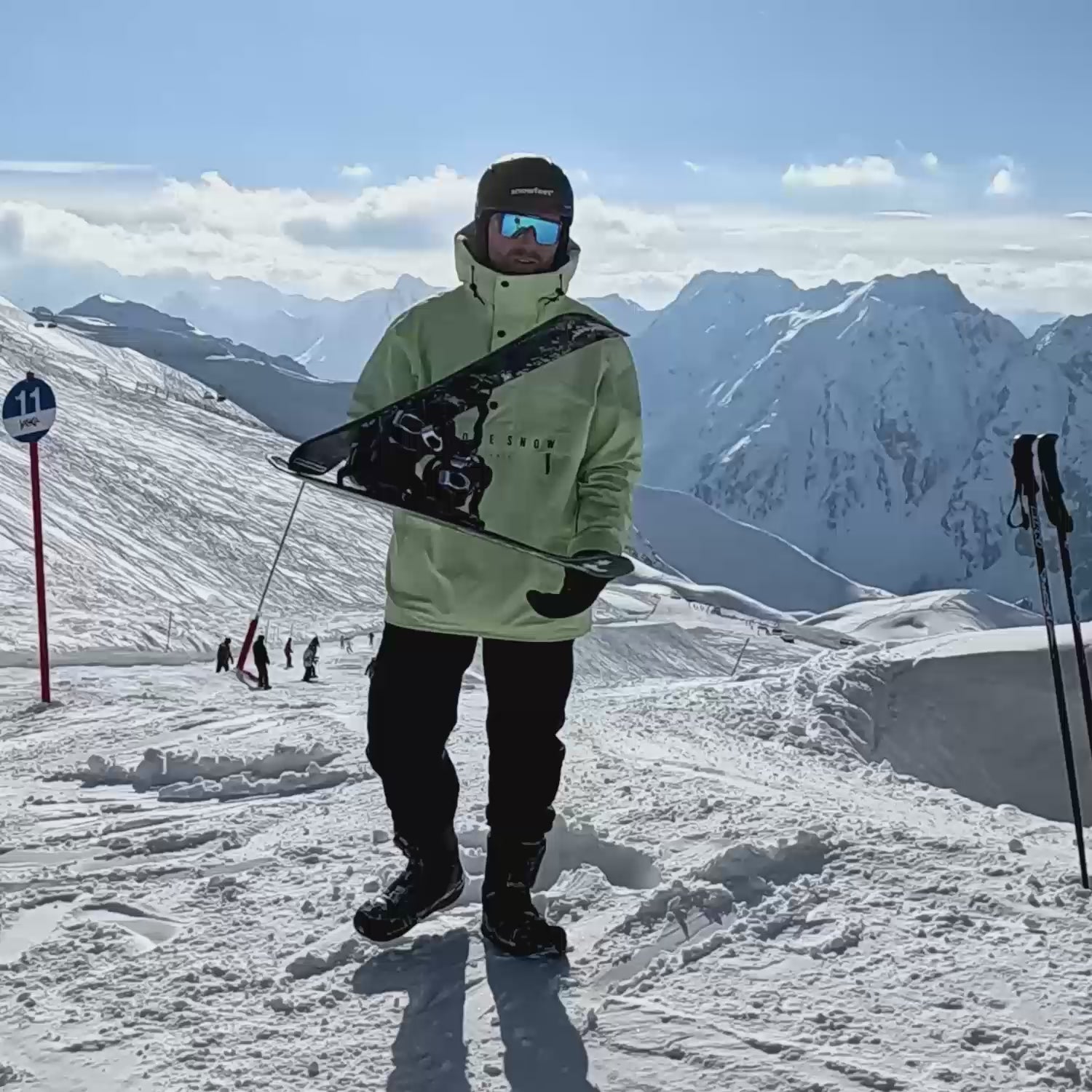
Laat een reactie achter
Deze site wordt beschermd door hCaptcha en het privacybeleid en de servicevoorwaarden van hCaptcha zijn van toepassing.